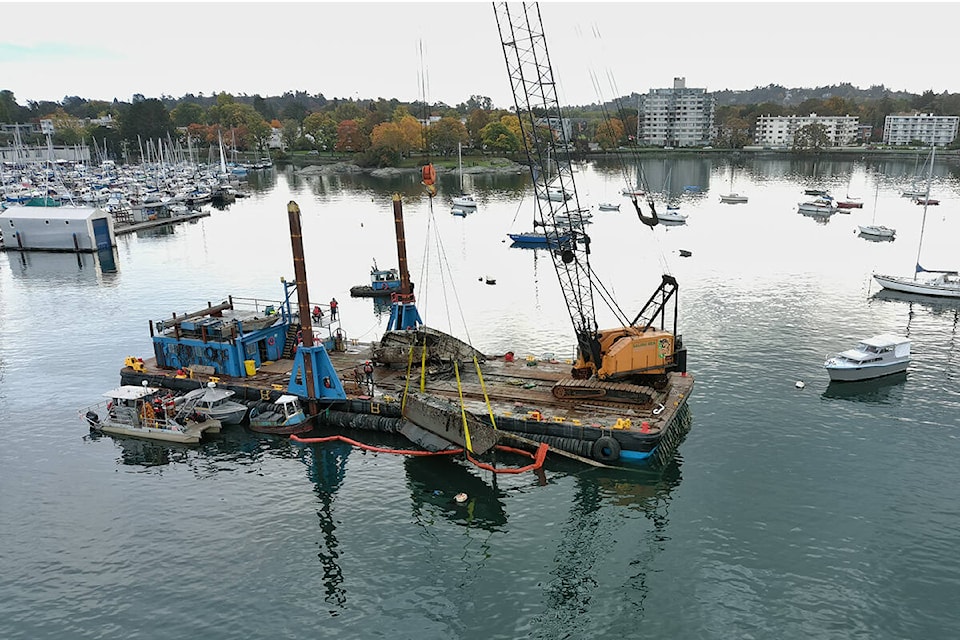More than a decade ago, the Queen of Sidney was making headlines for all the wrong reasons.
The former BC Ferries vessel, in use from 1960 to 2000, had been moored since 2002 near Silverdale, between Mission and Maple Ridge. In 2012, with snowpack high and warm temperatures on the way, the fear was that high, fast moving water on the Fraser River would tear the massive, rusting hull loose from its moorings and send it rushing down the Fraser.
From there, who knew what it would hit? Log booms, power lines, houseboats, or bridge footings could have been in its path. A provincial emergency order was sent out to have the Queen of Sidney properly secured.
Now, 11 years later, has the derelict ship been removed?
Nope. It’s still right there, better secured against flood, but no closer to being properly scrapped or put to some productive use.
Dead boats, whether still afloat like the old ferry, or run aground, or sunk in shallow water, are an ongoing problem in B.C.
While it’s particularly bad on parts of the northern coastline, Maple Ridge and Pitt Meadows are among the Lower Mainland communities that also suffer more from the problem.
With miles of thinly-populated shoreline along the Fraser and Alouette Rivers, not to mention our navigable lakes, there are plenty of places where someone could discard an aging, leaky boat, and simply walk away.
READ ALSO: WEB POLL: Should we ban lawn watering every summer
The Dead Boats Removal Society, which seeks to remedy this problem, just learned that there is no money in federal grant coffers this year to help clean up a site on Alouette River that’s both an eyesore and an environmental concern, where three boats and an entire boat shed are sinking into the water.
Both federal and provincial authorities, in partnership with police and the Vancouver Fraser Port Authority, need to tackle this problem from both sides.
First, efforts to clean up dead boats need more funding. That’s the relatively simple part of the equation.
On the other side, there needs to be a stronger system of education, enforcement, and incentives to keep people from abandoning boats in the first place.
Offering small financial payments to people for turning over their aging boats, rather than simply dumping them, could help keep oil- and diesel-filled wrecks off our shorelines.
And hefty fines for people who do still decide to abandon their watercraft would also not go amiss.
Our shorelines are a collective responsibility, and we’ll need to work together on preserving them.
